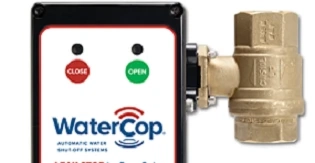Water damage is one of the most expensive and disruptive problems a homeowner can face. Fortunately, modern technology offers solutions that can help prevent such disasters. A smart water shut off valve is a highly effective tool that not only detects leaks but also shuts off your water supply automatically to prevent further damage. If you’re considering installing a smart water shut off valve, this guide will walk you through the process and highlight the key benefits.
What Is a Smart Water Shut Off Valve?
A smart water shut off valve is a device that integrates with your home’s plumbing system to monitor water flow and detect leaks. Unlike traditional valves, these smart devices can be controlled remotely via a smartphone app, and they often come with additional features like real-time alerts, water usage monitoring, and integration with home automation systems. When the valve detects an irregularity, such as a sudden drop in water pressure or a continuous flow of water, it automatically shuts off the water supply to prevent damage.
Why Install a Smart Water Shut Off Valve?
The primary reason to install a smart water shut off valve is to protect your home from water damage. Leaks can occur at any time, often without warning. By the time a leak is noticed, significant damage may have already occurred. A smart water shut off valve minimizes this risk by immediately stopping the water flow as soon as a leak is detected. This can save you thousands of dollars in repair costs and prevent the inconvenience of dealing with water damage.
Another benefit is the ability to monitor and control your water supply remotely. Whether you’re at work, on vacation, or just out for the day, you can check your water usage and control the valve from anywhere. This is especially useful for second homes or rental properties, where a leak could go unnoticed for an extended period.
Installation Tips
Installing a smart water shut off valve can be a straightforward process, but it’s important to follow a few key steps:
Turn Off the Main Water Supply: Before starting, ensure that the main water supply to your home is turned off.
Locate the Installation Point: Identify the main water line where the valve will be installed. It’s typically installed just after the main shut off valve.
Professional Installation: While some homeowners may feel comfortable installing the valve themselves, professional installation is recommended to ensure proper setup and functionality.
Test the System: After installation, test the valve to ensure it’s working correctly. This includes checking the remote access features and ensuring that the valve shuts off the water supply when a leak is simulated.
Conclusion
A smart water shut off valve is a valuable addition to any home, offering protection against leaks and the convenience of remote monitoring. By following these installation tips, you can ensure that your valve is installed correctly and ready to protect your home from water damage.


